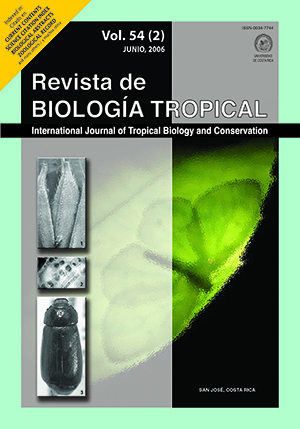Abstract
The Jaragua National Park is located in a remote area to the SW coast of the Dominican Republic. Fishing and mining are the major human activities. The main reef formations of the Park include: (a) long bank reefs (spur and groove) growing as bands over the platform and running in a SW-NW direction at 12-25 m depth, (b) well developed, deep, fringing reefs at the platform edge (drop-off) areas which could extend from 10 to 45 m depth, and (c) small patch reefs and poorly developed coral-octocoral-sponge-algal communities in shallow platforms near shore, rocky bottoms, and over the submerged walls of the uplifted reef. Nine reef localities were surveyed between Cabo Beata and Bahia Honda using Scuba diving to inventory the diversity and relative abundance of scleractinian corals, octocorals and sponges. Fringing reefs were surveyed starting at the bottom (30 m) and swimming in a zig-zag pattern (50 m on each side) to shallower areas. Bank reefs were surveyed by swimming in zig-zag across the spur-groove formation along 500 m. Sponges were the most diverse group with 83 species in 50 genera followed by the scleractinian corals with 56 species in 26 genera and the octocorals with 47 species in 15 genera. New records included eight coral species, 29 octocoral species and 59 sponges. The diversity, species composition and abundance of particular groups varied across the different localities. Northern reefs within the park and the Los Frailes Island offshore had the highest live cover, relative abundance and diversity for the three groups. In general, the Jaragua National Park had the highest diversity of corals, octocorals and sponges reported for the Dominican Republic and rank amongst the highest reported for the northern Caribbean. It is recommended that the area be protected and that fishing activities be regulated or eliminated altogether.
##plugins.facebook.comentarios##

This work is licensed under a Creative Commons Attribution 4.0 International License.
Copyright (c) 2006 Revista de Biología Tropical






